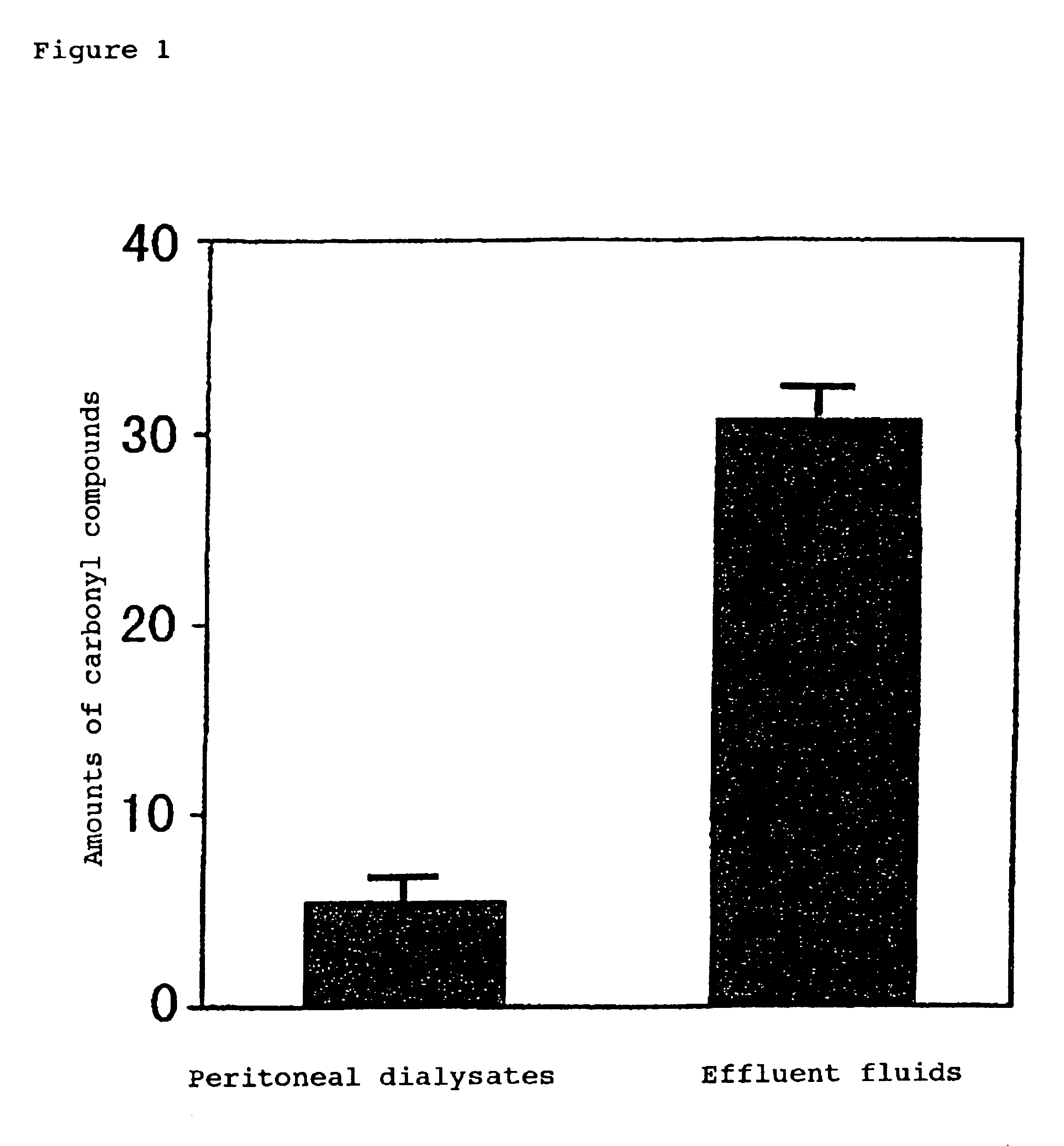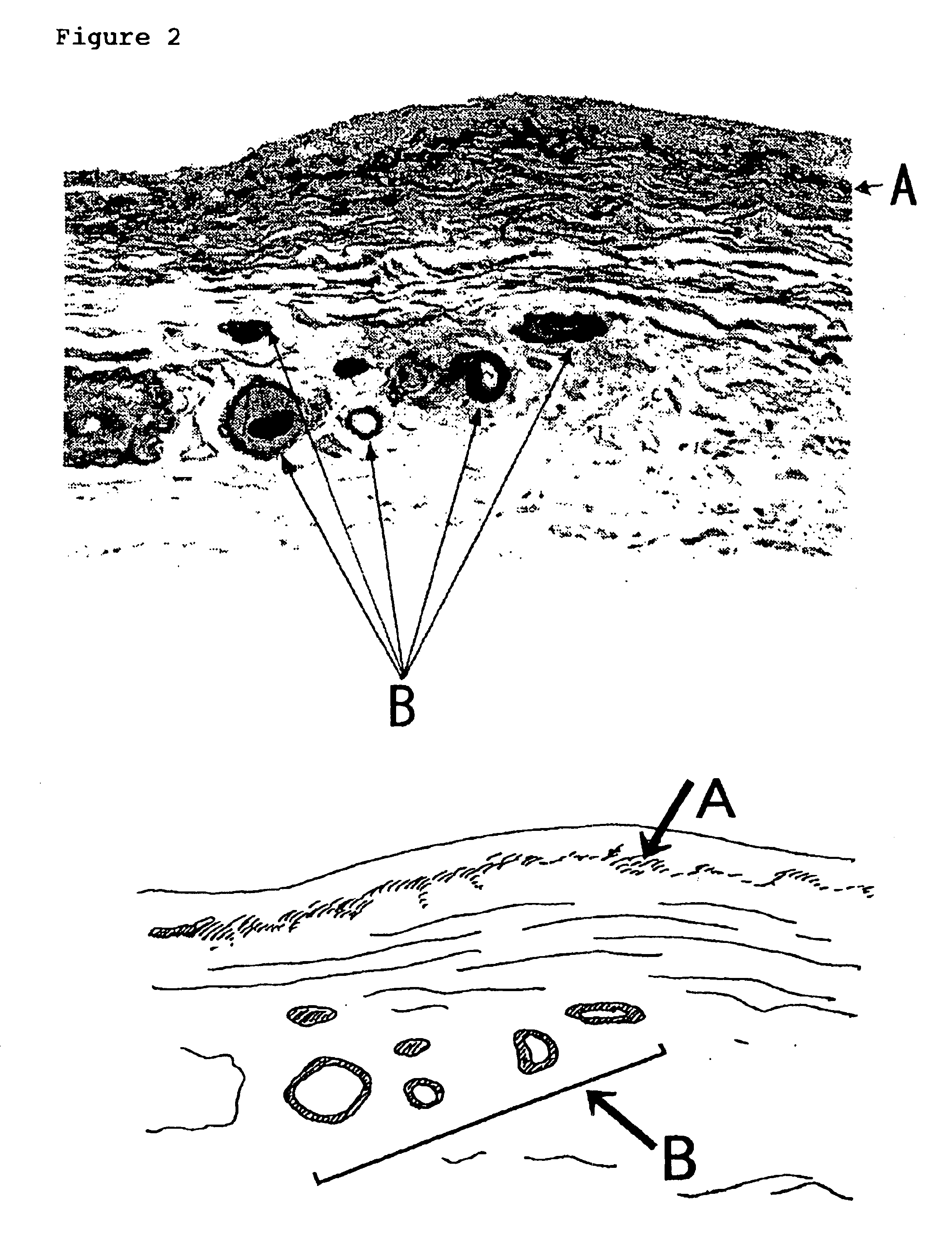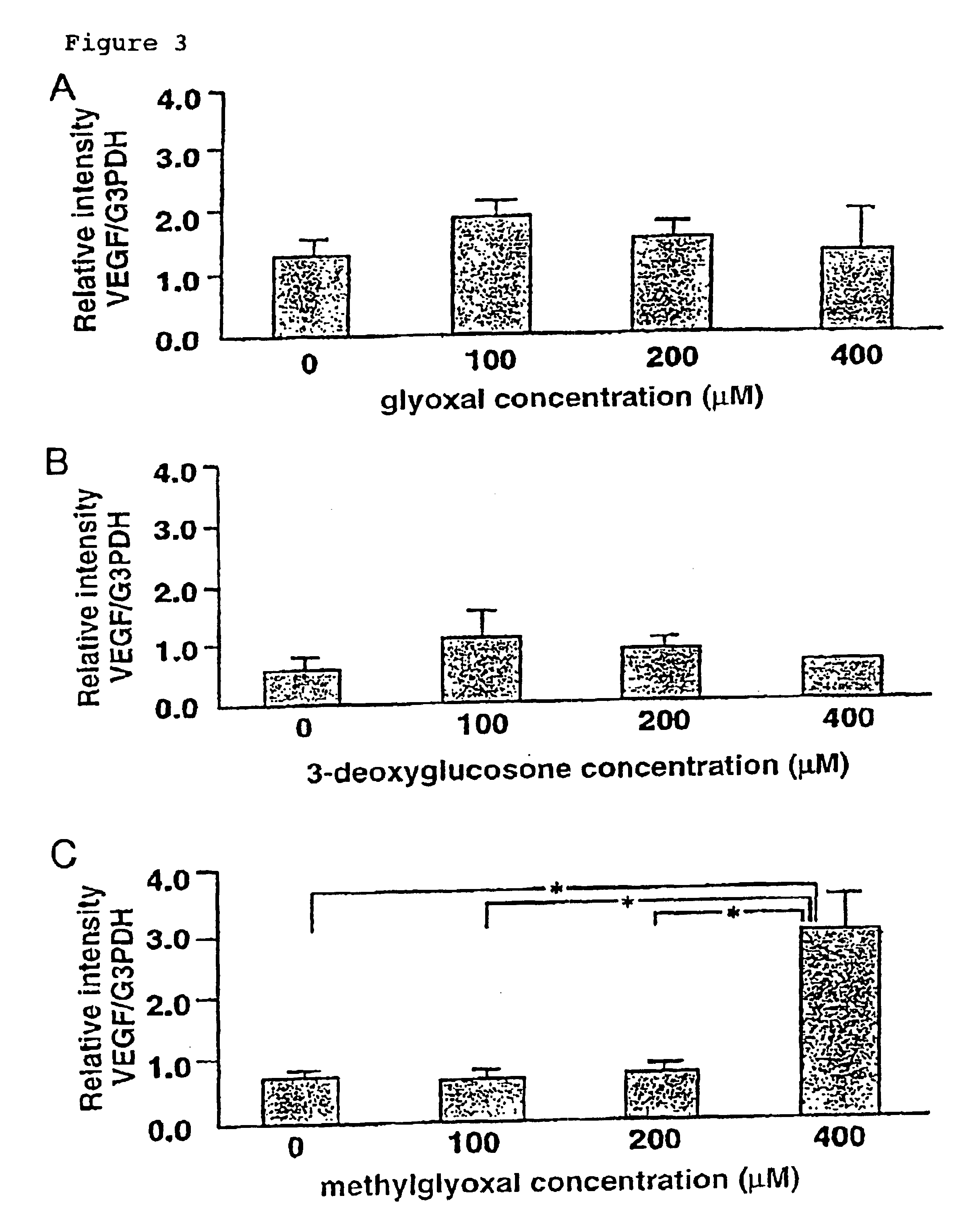Carbonyl-stress improving agent and peritoneal dialysate
a carbonyl-stress and dialysate technology, applied in the field of peritoneal dialysate, can solve the problems of peritoneal fusion, lower water removal ability, abdominal protein denaturation and hardening, etc., and achieve the effect of reducing damage from carbonyl compounds, improving carbonyl-stress state, and minimizing as much as possible damage from these carbonyl compounds
- Summary
- Abstract
- Description
- Claims
- Application Information
AI Technical Summary
Benefits of technology
Problems solved by technology
Method used
Image
Examples
example 1
Measurement of the Amount of Carbonyl Compounds Present in the Peritoneal Dialysate and Peritoneal Dialysate Effluent
[0157]In order to demonstrate the generation of carbonyl stress in the peritoneal cavity, the amount of carbonyl compounds present in the peritoneal dialysate effluent was measured according to the following experiment method.
(i) Measurement of Carbonyl Compounds
[0158]After the peritoneal dialysate (Baxter Ltd.; Dianeal PD-2 2.5) had been administered to a peritoneal-dialysis patient and had been allowed to dwell in the peritoneal cavity overnight, the peritoneal dialysate effluent was collected from the patient. Aliquots (400 μl) of both the peritoneal dialysate and the peritoneal dialysate effluent were separately mixed with a 400-μl solution of 0.5 N hydrochloric acid containing 1.5 mM 2,4-dinitrophenylhydrazine (2,4-DNPH) (Wako Pure Chemical Industries, Ltd.), and the mixture was stirred at room temperature for 30 minutes to react the carbonyl compound with 2,4-DN...
example 2
Histological Localization of Carbonyl-modified Proteins in the Peritoneum of a Peritoneal-dialysis Patient
[0162]The localization of carbonyl compounds in peritoneal tissues of a peritoneal-dialysis patient was studied by immunostaining using malondialdehyde as the index.
[0163]Peritoneal tissues from a peritoneal-dialysis patient (50-year-old male with a five-year history of peritoneal dialysis) were processed by immunostaining according to the method of Horie et al. (Horie, K. et al., J. Clin. Invest., 100, 2995-3004 (1997)). The primary antibody used was a mouse anti-malondialdehyde monoclonal antibody. The results showed that intense positive signals were present in the connective tissue under removed mesothelial cells, and the signals were also present on the thickened vascular wall (FIG. 2).
[0164]Malondialdehyde (MDA) is a carbonyl compound, which is generated by the degradation of peroxide lipid. Therefore, immunostaining was carried out by using antibodies against 4-hydroxy-2-...
example 3
Peritoneal Cell Damages by Methylglyoxal
[0165]Decreased ultrafiltration of peritoneum by long-term peritoneal dialysis has been taken as evidence for an augmentation of the peritoneal surface area available for diffusive exchange (Krediet R T, Kidney Int, 55: 341-356 (1999); Heimburger O et al., Kidney Int, 38: 495-506 (1990); Imholz A L et al., Kidney Int, 43: 1339-1346 (1993); Ho-dac-Pannekeet M M et al., PeritDial Int, 17:144-150 (1997)). Namely, glucose in peritoneal dialysate flows out of peritoneal cavity by diffusion, thereby decreasing the dialytic function according to osmotic pressure gradient. An increased vascular surface area within the peritoneum might also account for this. In addition, the vascular endothelial growth factor (VEGF) might play a critical role in this pathology. VEGF increases vascular permeability (Senger D R et al., Science 219: 983-985 (1983); Connolly D T et al., J Biol Chem, 264: 20017-20024 (1989)), stimulates nitric oxide (NO) synthesis and vasod...
PUM
| Property | Measurement | Unit |
|---|---|---|
| period of time | aaaaa | aaaaa |
| dwelling time | aaaaa | aaaaa |
| time | aaaaa | aaaaa |
Abstract
Description
Claims
Application Information
 Login to View More
Login to View More - R&D
- Intellectual Property
- Life Sciences
- Materials
- Tech Scout
- Unparalleled Data Quality
- Higher Quality Content
- 60% Fewer Hallucinations
Browse by: Latest US Patents, China's latest patents, Technical Efficacy Thesaurus, Application Domain, Technology Topic, Popular Technical Reports.
© 2025 PatSnap. All rights reserved.Legal|Privacy policy|Modern Slavery Act Transparency Statement|Sitemap|About US| Contact US: help@patsnap.com



